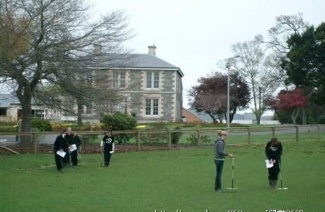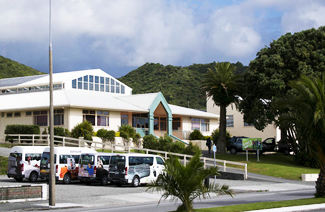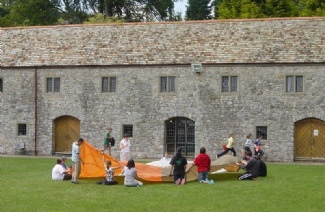熟悉GMAT阅读套路最简单的方法就是在备考的过程中接触大量的阅读,大家在备考冲刺阶段可以进行强度较大的阅读训练。本文小编将为大家为大家来了一些阅读题目,大家可以练习一下,一起来看看
In choosing a method for determining climatic condi-
tions that existed in the past, paleoclimatologists invoke
four principal criteria. First, the material---rocks, lakes,
vegetation, etc—on which the method relies must be
(5) widespread enough to provide plenty of information,
since analysis of material that is rarely encountered will
not permit correlation with other regions or with other
periods of geological history. Second, in the process of
formation, the material must have received an environ-
(10) mental signal that reflects a change in climate and that
can be deciphered by modern physical or chemical
means. Third, at least some of the material must have
retained the signal unaffected by subsequent changes in
the environment. Fourth, it must be possible to deter-
(15) mine the time at which the inferred climatic conditions
held. This last criterion is more easily met in dating
marine sediments, because dating of only a small
number of layers in a marine sequence allows the age of
other layers to be estimated fairly reliably by extrapola-
(20) tion and interpolation. By contrast, because sedimenta-
tion is much less continuous in continental regions, esti-
mating the age of a continental bed from the known
ages of beds above and below is more risky.
One very old method used in the investigation of past
(25) climatic conditions involves the measurement of water
levels in ancient lakes. In temperate regions, there are
enough lakes for correlations between them to give us a
reliable picture. In arid and semiarid regions, on the
other hand, the small number of lakes and the great
(30) distances between them reduce the possibilities for corre-
lation. Moreover, since lake levels are controlled by rates
of evaporation as well as by precipitation, the interpreta-
tion of such levels is ambiguous. For instance, the fact
that lake levels in the semiarid southwestern United
(35) States appear to have been higher during the last ice age
than they are now was at one time attributed to
increased precipitation. On the basis of snow-line eleva-
tions, however, it has been concluded that the climate
then was not necessarily wetter than it is now, but rather
(40) that both summers and winters were cooler, resulting in
reduced evaporation.
Another problematic method is to reconstruct former
climates on the basis of pollen profiles. The type of vege-
tation in a specific region is determined by identifying
(45) and counting the various pollen grains found there.
Although the relationship between vegetation and
climate is not as direct as the relationship between
climate and lake levels, the method often works well in
the temperate zones. In arid and semiarid regions in
(50) which there is not much vegetation, however, small
changes in one or a few plant types can change the
picture dramatically, making accurate correlations
between neighboring areas difficult to obtain.
1. Which of the following statements about the
difference between marine and continental
sedimentation is supported by information in the
passage?
(A) Data provided by dating marine sedimentation is
more consistent with researchers’ findings in
other disciplines than is data provided by dating
continental sedimentation.
(B) It is easier to estimate the age of a layer in a
sequence of continental sedimentation than it
is to estimate the age of a layer in a sequence
of marine sedimentation.
(C) Marine sedimentation is much less widespread
than continental sedimentation.
(D) Researchers are more often forced to rely on
extrapolation when dating a layer of marine
sedimentation than when dating a layer of
continental sedimentation.
(E) Marine sedimentation is much more continuous
than is continental sedimentation.
2. Which of the following statements best describes the
organization of the passage as a whole?
(A) The author describes a method for determining past
climatic conditions and then offers specific
examples of situations in which it has been used.
(B) The author discusses the method of dating marine
and continental sequences and then explains how
dating is more difficult with lake levels than with
pollen profiles.
(C) The author describes the common requirements of
methods for determining past climatic conditions
and then discusses examples of such methods.
(D) The author describes various ways of choosing a
material for determining past climatic conditions
and then discusses how two such methods have
yielded contradictory data.
(E) The author describes how methods for determining
past climatic conditions were first developed and
then describes two of the earliest known methods.
3. It can be inferred from the passage that
paleoclimatologists have concluded which of the
following on the basis of their study of snow-line
elevations in the southwestern United States?
(A) There is usually more precipitation during an ice age
because of increased amounts of evaporation.
(B) There was less precipitation during the last ice age
than there is today.
(C) Lake levels in the semiarid southwestern United
States were lower during the last ice age than they
are today.
(D) During the last ice age, cooler weather led to lower
lake levels than paleoclimatologists had previously
assumed.
(E) The high lake levels during the last ice age may have
been a result of less evaporation rather than more
precipitation.
4. Which of the following would be the most likely topic
for a paragraph that logically continues the passage?
(A) The kinds of plants normally found in arid regions
(B) The effect of variation in lake levels on pollen
distribution
(C) The material best suited to preserving signals of
climatic changes
(D) Other criteria invoked by paleoclimatologists when
choosing a method to determine past climatic
conditions
(E) A third method for investigating past climatic
conditions
5. The author discusses lake levels in the southwestern
United States in order to
(A) illustrate the mechanics of the relationship between
lake level, evaporation, and precipitation
(B) provide an example of the uncertainty involved in
interpreting lake levels
(C) prove that there are not enough ancient lakes with
which to make accurate correlations
(D) explain the effects of increased rates of evaporation
on levels of precipitation
(E) suggest that snow-line elevations are invariably
more accurate than lake levels in determining rates
of precipitation at various points in the past
6. It can be inferred from the passage that an
environmental signal found in geological material
would not be useful to paleoclimatologists if it
(A) had to be interpreted by modern chemical means
(B) reflected a change in climate rather than a long-
term climatic condition
(C) was incorporated into a material as the material was
forming
(D) also reflected subsequent environmental changes
(E) was contained in a continental rather than a marine
sequence
7. According to the passage, the material used to determine
past climatic conditions must be widespread for which
of the following reasons?
Ⅰ.Paleoclimatologists need to make comparisons
between periods of geological history.
Ⅱ. Paleoclimatologists need to compare materials that
have supported a wide variety of vegetation.
Ⅲ. Paleoclimatologists need to make comparisons with
data collected in other regions.
(A) Ⅰ only
(B) Ⅱ only
(C) Ⅰ and Ⅱ only
(D) Ⅰ and Ⅲ only
(E) Ⅱ and Ⅲ only
8. Which of the following can be inferred from the passage
about the study of past climates in arid and semiarid
regions?
(A) It is sometimes more difficult to determine past
climatic conditions in arid and semiarid regions than
in temperate regions.
(B) Although in the past more research has been done on
temperate regions, paleoclimatologists have
recently turned their attention to arid and semiarid
regions.
(C) Although more information about past climates can
be gathered in arid and semiarid than in temperate
regions, dating this information is more difficult.
(D) It is difficult to study the climatic history of arid and
semiarid regions because their climates have tended
to vary more than those of temperate regions.
(E) The study of past climates in arid and semiarid
regions has been neglected because temperate
regions support a greater variety of plant and animal
life.

















